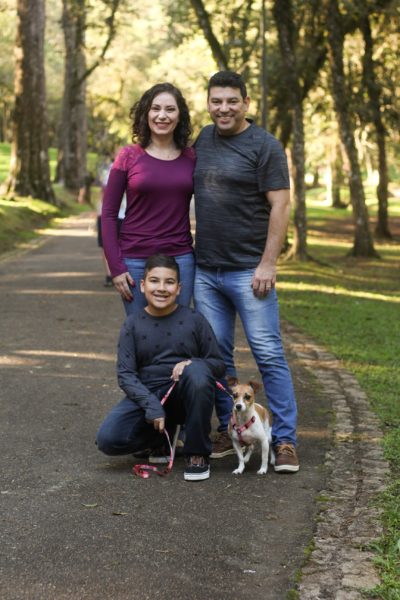A relationship of love and trust between parent and child is of utmost importance whenever parents talk to children about sexuality. Children need to know that they can ask a parent any questions they have, and that their concerns will be accepted and answered in an atmosphere of love and safety. Many parents hold concerns about unduly drawing their children’s attention to same-sex attraction or might not feel qualified to answer questions about it, and so sometimes this important discussion is avoided with teens. However, same-sex attraction is something teens often have questions about and even sometimes experience, and it should be discussed in the same loving and safe manner as other elements of sexuality.
This loving, safe environment would extend to how we respond to anyone who identifies as gay, lesbian, or any other sexual minority. Our children track what we think and feel just by listening to our day-to-day comments, so use that opportunity to help them create loving attitudes toward themselves and others. By doing this you will be creating a safe space for your teen to ask questions and further discussions that encourage respect for others.
THE NUMBERS
Researchers have found that over 95% of individuals are mainly attracted to individuals of the opposite sex,[i] and identify as heterosexual. BYU researchers reported, “We also know that most males and about half of females who are attracted to individuals of the same sex have been exclusively that way since they sexually matured and are not likely to change who they are primarily attracted to.”[ii] Being attracted to members of the same sex is not a choice that individuals make.
Of interest, according to the CDC’s National Health Statistics Report (conducted every few years), it appears that as of 2018 more young people are reporting experiencing periodic same-sex attraction than had done so in the past. About 26% of females and 11% of males experience some same-sex attraction,[iii] but there has not been an accompanying increase in same-sex behavior or identifying as gay. Same-sex attraction can be fleeting, whereas sexual orientation is more stable, but sometimes still fluid. According to the CDC ,1.9% of males and 1.4% of females self-report as exclusively homosexual.[iii]
SEXUAL VARIABILITY
Even though these percentages are small, this is an important topic to address. Like the numbers above indicate, females report slightly higher levels of same-sex attraction (although not necessarily same-sex orientation) than males.[iv] Females also report more variability across the lifespan in regards to sexual attraction than males. That is, females might be more prone to feeling attracted to both sexes and that can vary over time, whereas males typically have a more consistent sense of sexual attraction, especially once the window of puberty closes. What does this mean for adolescents?
It is possible that a teen might experience same-sex attraction, but might not necessarily ultimately identify as gay or even bisexual. Letting adolescents know that sexual attraction is normal and healthy, and that it’s what we do with that attraction that gives sex its power—or diminishes it—can help them understand the power of attraction and create healthy sexual meanings. An adolescent child might have a passing curiosity about the same sex, or a moment of arousal that confuses her or him. Parents can help teens understand that they are normal and not alone, and that sexual identity might be very clear early on or it might be something that unfolds more slowly.
HOW DO I TALK TO MY CHILD?
BYU researchers suggest that parents might want to ask their children the following questions when talking about same-sex attraction.
- Do you have any friends or people you know at school who are homosexual? How do you feel about this?
- Do you have questions about same-sex attraction?
- Do people ever ask you about your stance on same-sex relationships or marriage? How do you answer them?ii
For adolescents who do feel same-sex attraction, the typical time-period children report feeling a sense of same-sex attraction is at about ten years old, with usually about three more years passing before adolescents act on that attraction.[v]
One of the best ways to allow children to make sense of their own sexuality and sexual development is to give space that is not sexualized. This is true no matter what the child’s sexual orientation is. This allows children space to sort through their feelings and growth and make sense of what is happening internally without distracting external influences. For example, constant sexualization in the media is likely connected to more sexual arousal toward both genders. Allowing your child to mature in an unpressured, non-sexualized way and on his or her own time line is important.
SAFE AND LOVING
Same-sex attraction is a topic that parents are sometimes hesitant to discuss with their children. Some parents worry they will give teens ideas they otherwise would not have had. It is important to remember that talking about same-sex attraction is not going influence a child to “choose” to be gay or not gay, because that is not a choice that individuals make. Parents might be hesitant to talk to children because they typically have expectations about their children and who they will become—and for some, having a gay child was not in the prewritten script. However, talking to adolescents about same-sex attraction in open and loving ways can help both parents and children navigate these waters, as can talking to other parents or support groups if needed. Creating this loving environment will benefit the relationship and establish a pattern for continued discussions.

Talking to teens about same-sex attraction can help them feel less isolated or confused. Perhaps reassuring them that transitory same-sex attraction is fairly common might be helpful as they work through their questions about sexual identity and attraction. Allowing children a safe space and sufficient, non-sexualized time to understand more about sexual attraction is useful. Being respectful of others who identify differently than we do is important. Perhaps assuring teens that sexual variability, to some degree, is to be expected might reduce confusion. And in the end, the best thing we can do as parents is assure our children that we love them exactly as they are.
[i] Bailey, J., Vasey, P. L., Diamond, L. M. (2016). Sexual orientation, controversy, and science. Psychological science in the public interest, 17(2), 45-101.
[ii] Padilla-Walker, L., Busby, D. M., Leavitt, C. E., & Carroll, J. S. (2018). A better way to teach kids about sex. Salt Lake City: Deseret Book. Page 152.
[iii] https://www.cdc.gov/nchs/data/nhis/sexual_orientation/ASI_2018_STWebsite_Tables-508.pdf
[iv] Baumeister, R. F. (2004). Gender and erotic plasticity: sociocultural influences on the sex drive. Sexual and Relationship Therapy, 19(2), 133-139.
[v] Bailey, J. M., Vasey, P. L., Diamond, L. M., Breedlove, S. M., Vilain, E., & Epprecht, M. (2016). Sexual orientation, controversy, and science. Psychological Science in the Public Interest, 17(2), 45–101

Rebecca Clarke
Rebecca W. Clarke is a PhD student at Brigham Young University studying with Dr. Chelom Leavitt. Her research focus is religion and sexuality, and she is currently working on papers dealing with sexual sanctification, sexual flourishing, and religiosity. Rebecca has been married to Sam Clarke for 24 years and they have four children.

